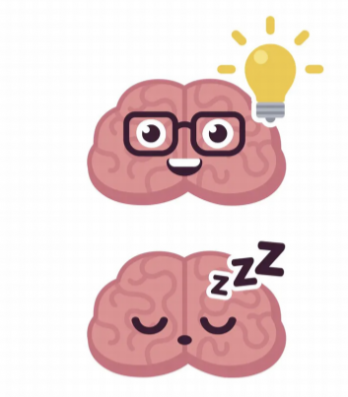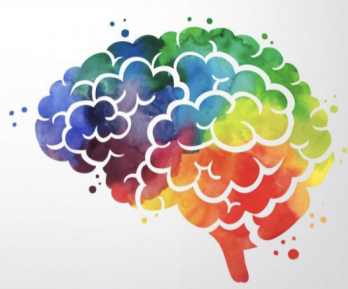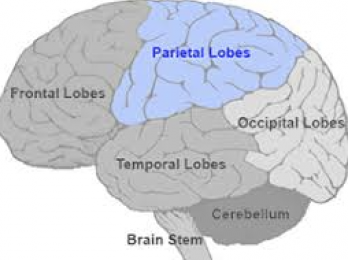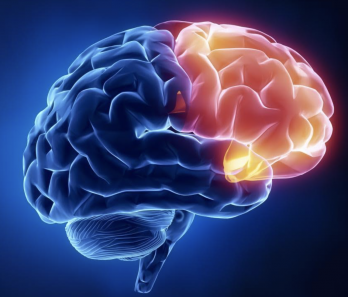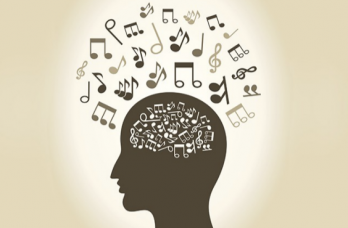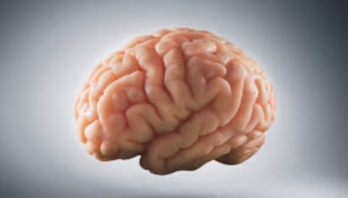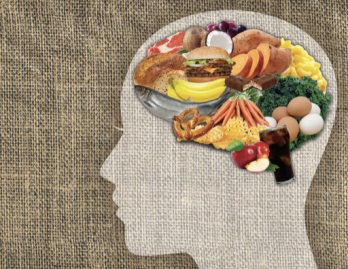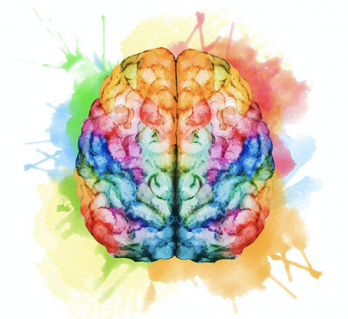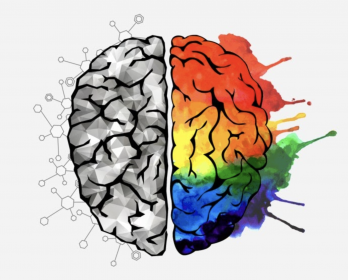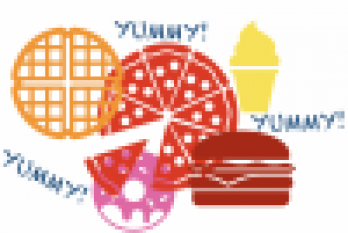Yawn!! You slowly open your eyes to see the bright sunlight glaring at you. Your alarm clock just woke you up from a deep sleep, giving a reminder that you have a big day ahead of you. As you wake up, you follow your routine and get started on your day. If you think this everyday activity of waking up may seem rather simple, get ready to have your mind blown with the amount of science involved behind waking up your sleepy brain!
[…]No matter where you are in the world, colors will always surround you. Whether it’s the dark brown dirt under you, or the bright blue sky with the pretty pink butterflies fluttering in the air, your brain perceives colors in such a unique way. This amazing capability that is being done by the brain is called color vision. Color vision is the ability to distinguish different wavelengths of electromagnetic radiation. The human eye and brain together translate light into color. Light receptors inside the human eye transmit messages to the brain. These messages produce what we call color, and gives us the ability to have color vision and see all of the different colors around us. Therefore, an apple doesn’t exactly have red “inside” it. The surface of the apple is reflecting the wavelengths we see as red, and is absorbing all the rest.
[…]Where is the Parietal lobe Located? The parietal lobe is located on top of the temporal lobe, which we will talk about in another blog. The Parietal lobe is in the left side of your cerebellum hemisphere. The parietal lobe is also located behind the Frontal lobe and in front of the optical lobe.
[…]Where is your Frontal Lobe? The frontal lobe is located in the front of your brain, as you might have guessed from the name. This lobe is located directly behind the forehead. The frontal lobe is the largest lobe in your brain. Since, this is located directly behind the forehead. It is the most common area where traumatic brain injury affects. If the frontal lobe is damaged, a lot can happen to the brain, resulting in physical effects.
[…]Imagine this. You just came back from a stressful day of work, and you can’t wait to jump onto your couch and wind down with some of your favorite tunes. You push in a pair of earbuds into your ears, and crank up the tunes. What happens next? Your toes, fingers, and soul unite with the calming music as you hear the sound of the sweet piano vibrating in your ears. Your fingers drum to the catchy beat. Perhaps your head and shoulders bob up and down. Pretty soon, you find yourself belting out to the lyrics, busting into a groovy move, and feeling the stress slowly melt off your shoulders.
[…]What does your brain do? Well, your brain does a lot of things, it basically controls your whole body and tells your body what to do. Your brain is divided into parts that do different things. For example there is part of your brain that connects with your eyes and it tells you where to look and documents everything. The same procedure happens with all parts of your body. The brain is divided into parts that control each part of your body. Neurons are nerves connected to your brain to difference parts of your body. Think of it this way, The Brain could be a vehicle engine. The nerves can be the wires connecting to every part of the vehicle. Makes sense, doesn’t it?
[…]GRRR! You hear a loud growl coming from your stomach, and you look right at your clock. Time to eat!
[…]The following blog is a winner of the Brainy Blog Competition.
Art is all about your creativity. Your imagination. The way the different colors in your palette mix together, and make a beautiful masterpiece. It’s also tons of fun for all ages! As an art lover, as well as a brainiac, whenever I painted, I got to thinking : how does art relate to the brain?
The many benefits of art include increasing creative capacities, reducing stress, increased consciousness, great results in education, and even increased blood flow to the brain! Let’s take a close look at some of the benefits, and clearly how it connects to the almighty brain!
Increasing Creative Capacities :
Have you ever seen the look of satisfaction on a child when they use their crayons and paints to draw? The happiness that art brings engages children on various levels, as it supports their hand-eye coordination, creativity, visual learning skills, as well as many other important development skills. Children always enjoy making art, even if it is as simple as finger painting. By helping and encouraging young minds to think creatively and use their supplies to create a work of art, the caregivers/parents can definitely help their children’s brain development, as well as give them a good stress reliever.
According to studies by the National Endowment for the Arts, “Art can also improve language development in young children. When parents talk with children about the art they are making, children learn how to describe visual elements like colors and shapes, and build their vocabularies even as they fine-tune their motor skills. Parents can help build language skills further by pointing out the art around them – a mural on the side of a building or a painting in a doctor’s office – and having a conversation with their children about what they see.” This proves that art is a great stress reliever, as it improves creativity while also improving language development in young children! The brain can help so much, and sometimes it relates to things you would never expect it to relate to! Thanks a lot, Mr. Brain!!
Art Helps Education :
Art is critical to people who wish to have a good education. Art helps calm you down, and to keep having resilience, even when you make a mistake. Therefore, you would also need these essential skills in education. Researchers say that creative pursuits help to build connections in the brain to strengthen cognitive reserve, or brain resilience, and subsequently prevent memory loss. Creating artwork can also improve fine motor skills through small, purposeful movements, which may help to prevent pain and stiffness.
The brain is such an important part of our bodies, without it we wouldn’t be able to function! Therefore, improving your brain by learning more everyday always helps your brain! Art and the brain, though they may be two completely different things, relate to each other so much! There are so many benefits for art that relate to the brain! Using these new facts, learning about art and the brain will definitely inspire you to do more arts, as there are so many brain benefits! Thanks to our brain, all humans have the amazing capability to do anything they desire!
Author: Vinuta Ramakrishnan
The following blog is a winner of the Brainy Blog Competition.
I have been wondering if art calms your brain, because it does for me even when I am just scribbling something. Now, let’s talk about REAL facts. I have found out that ART has an impact on our brain wave patterns and emotions, and the nervous system can actually raise serotonin levels. Research has proven art can develop neural systems that produce a broad spectrum of benefits from great creativity and improved emotional balance. AWESOME!!! That is a lot to take in, but it is cool. Also, did you know that the frontal cortex is the center of creativity! and it is the main reason we can think creatively. It contributes to creative thinking (such as drawing or imagining). Wow!!! art does do a lot of cool and good things to our brain. Just with what I have gathered so far.
Have you ever wondered how your brain processes paintings and artworks? well, I am going to tell you how the brain does it. It’s kind of complicated but I will put it in simple words. Your brain is divided into a lot of different parts, believe me, a LOT. The part that I am going to be focusing on is the visual cortex, which is also called the occipital lobe. This is one of the main lobes of the brain. Sounds complicated right. Because, it is where everything you see gets stored, and when you see paintings and artworks everything gets stored there. Which is cool because all of the information gets stored at the back of the brain. Remember, all of the information has to travel through the brain to get to the visual cortex, also think about how fast the information has to get through. The information travels through a nerve called the optical nerve.
Now, I am going to talk about how art is good for your brain. I have done enough research to say that art can make the prefrontal cortex (also known as the hippocampus) stronger. Drawing increases many of the cognitive functions that researchers typically call as ‘Creative’ and ‘Right brained’ activities. That is good news. Art also strengthens the visual cortex. Art can calm stress and anger. Psychology Today reported a study published this year in The Journal of Korean Medical Science discovered that, “Mindful art therapy helped ease anxiety symptoms in people with heart disease.”
When you are drawing, multiple parts of your brain are working together like, when you draw, your cerebellum help you move your hand to the right direction and your frontal cortex makes up an idea of what to draw and sends it to your cerebellum which then makes your to hand draw it, then your eye transfers what it sees to the optic nerve then the nerve sends it to the visual cortex and then it sorts out all the information and then sends it to the cerebellum which then makes a correct muscle move.
The last and final fact is that all of your frontal areas of your brain get most of their strength from brain waves, and as I have mentioned before, art produces a lot of brain waves, so art is good for your brain. As you can see with all of the information I have gathered so far, art is really good for your brain and makes certain parts of your brain stronger.
I hope you believe that art calms your brain and remember to “draw and keep your brain strong”.
Author: Lakshana Arumugam
Pancakes! Waffles! Yum Yum Yum. Pizza! Awesome, but where is the soda?
Food is tasty. Sometimes, though, it is just too yummy for us. We can’t stop eating. As a result, many Americans today are obese. In fact, obesity is the biggest crisis right now in our country. Over 70 million Americans are obese. We must understand why we love food in order to take the right measures in cutting back. Just like all of our other behaviors, the answer to this question lies in the brain, the mysterious blob in our heads that seems to control literally everything in and about us.
Read More